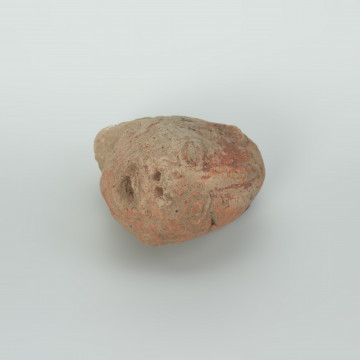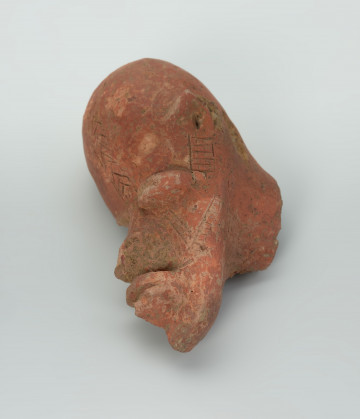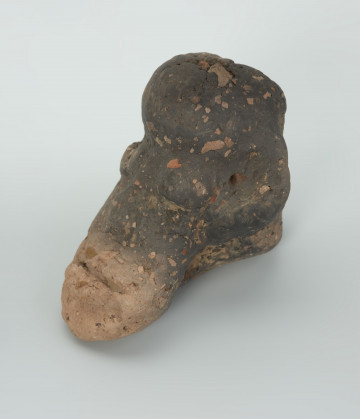
Head
około 1201 — 1985
National Museum in Szczecin
Part of the collection: Terracotta from the Niger
The origins and purpose of terracotta figurines from the ancient city of Djenne-Jeno (also called old Djenne or Djenne, Djenne-Djenno, Jenne-Jeno, or old Jeno) are still the subjects of scientific research. During excavations, carvings of human figures and their fragments have been discovered in residential parts of houses, so many researchers believe that they may have represented dead ancestors or guardian spirits. The sculptures were most probably placed on domestic altars. The thesis may be supported by the continuing cult of ancestors in the region and the belief in guardian spirits to protect households.Djenne-Jeno is considered one of the oldest cities in sub-Saharan Africa, founded in the 3rd century BC. Its heyday was between the 6th and 9th centuries when up to 20,000 people inhabited it. It owes its development mainly to its convenient location on the trade route between the Sahara and the lands south of the Niger River. The city was abandoned in the 14th century for unexplained reasons. Some experts believe that it was due to the emergence of a new religion, Islam, in the region, but it may equally well have been due to an ever-increasing population or the relocation of the trade route to the neighbouring medieval city of Djenne.
Katarzyna Findlik-Gawron
Author / creator
Dimensions
cały obiekt: height: 6 cm, width: 4,5 cm
Creation time / dating
Creation / finding place
Identification number
Location / status

około 1201 — 1985
National Museum in Szczecin

około 1201 — 1985
National Museum in Szczecin

około 1201 — 1985
National Museum in Szczecin
DISCOVER this TOPIC
Museum of King Jan III's Palace at Wilanów
DISCOVER this PATH
Educational path